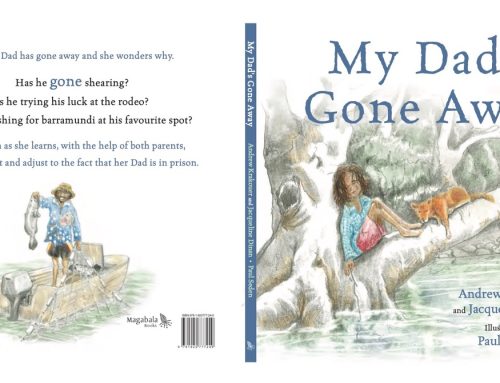MY MIND’S I: Some of the members of the production prepare to share their stroke survival stories in the hour-long performance. Image supplied by Dr Linden Wilkinson.
I am coming to question, I hope in a constructive way, the kinds of performance creation practices that support the participation of survivors as actors in rehabilitation settings.
Recently I was involved in the creation of a performed work, My Mind’s I, with Stroke Survivors in Newcastle, NSW. It was a pilot arts-based research initiative that was developed to assess the effectiveness of a Devised Theatre Performance intervention in terms of Stroke Survivors’
- sense of self-efficacy;
- quality of life both mental and physical;
- patient, family, carer and social relationships;
- and survivors’ understandings of courage and resilience.
The pilot study was conducted over an eight-week period. The participants met twice a week for two hours at a time and in week eight there were two performances of the play; one for family and carers and the other for health professionals. We had access to both these audiences, because we met and rehearsed at the John Hunter Hospital, and the participants were signatories on a volunteer research register. We were therefore embedded in a hospital/medical research setting.
The play’s content primarily focused on the participants’ experiences of having a stroke, the immediate aftermath and the paths their lives have taken since.
As this was an inter-disciplinary project, both qualitative and quantitative data was collected at the beginning of rehearsals and after the final performance. Quantitative tools included:
- The Australian Daily Living Self Efficacy Questionnaire (DLSES) (Maujean, et al. 2014;
- Stroke and Aphasia Quality of Life Scale (Hilari et al., 2003);
- Stroke Impact Scale (SIS) version 2.0, item 9 (stroke recovery) (Duncan et al 1999);
- DASS (Depression Anxiety Stress Scale) (Lovibond & Lovibond; 1995);
- Modified Rankin Scale (MRS) of physical functioning (Sulter, et al 1999);
With only 9 participants from an original research field of 11, the amount of quantitative data we obtained was small but significant. However, because our qualitative data included audience responses, it was more extensive and from my perspective, as the theatre-maker involved, more informative. People commented on how much they liked seeing real survivors, not actors, because the work was more powerful, more engaging, more resonant.
The participants delivered their stories as verbatim theatre. This is a form of theatre, where individual testimonies are interwoven to deliver deeper understandings of lived experiences, generally through juxtaposition or corroboration within edited narratives. However, because the participants themselves were articulate and gregarious from the outset, I introduced the possibility of additional material into our rehearsals with basic role play exercises, in order to locate stories about being post-stroke and back in the community.
I called these role play sections “Unhelpful Conversations” and mostly they concerned the difficulty of finding employment. To find the content, the participants improvised given scenarios in pairs; one was post-stroke, the other was “ordinary”, the term developed by the participants for someone who hadn’t had a stroke. The role plays were terrific: informative, emotional, empathic. Three of the “Unhelpful Conversations” went into the play.
My Mind’s I ran for approximately forty minutes; the play text was read and the participants remained seated. Subsequently we were invited to present an edited version of the play twice; once for an HMRI (Hunter Mind Research Institute) Open Day and once as part of an ABC Compass program. On both of these occasions, because the performed work had to be so much shorter, the collective decided to eliminate the “Unhelpful Conversations” immediately. The decision to do this was made so quickly, I suspected it was because I had not sufficiently skilled the participants to feel as confident with the form.
Role plays involve interaction and conflict, whereas testimony is more of a monologue and, unlike scripted role plays, the ‘actor’ owns, not shares, the space. Yet the “Unhelpful Conversations” content was still the participants words, their knowledge; the play text came from the same source as the testimonies. Furthermore, the play, I believe, was stronger, for their inclusion. Even some of the participants said they missed them after the edited performances.
I recognise now that working with survivors delivers different and potentially richer theatre content-wise in the rehabilitation setting. I also recognise that I, as the director, should also include time in the script development process to encourage skills in the delivery of a wider range of content than testimony alone, as this reflects the reality of participants’ lives, as they negotiate their diverse communities.
For the participants My Mind’s I was a very positive experience and they now are making another play independently about their post-stroke lives. Performance has given them a new focus and a new way of contributing. Like the play, My Mind’s I, their aim is to perform their new work for recent stroke survivors to inform, to reassure, to encourage.
Through their work I have come to understand that the embodiment of story for performance means there is an opportunity to express multiple responses to trauma, from major events to daily challenges and, as the content shifts, so must the way these stories are told in performance. I now know the stories are already there; they only require time.





